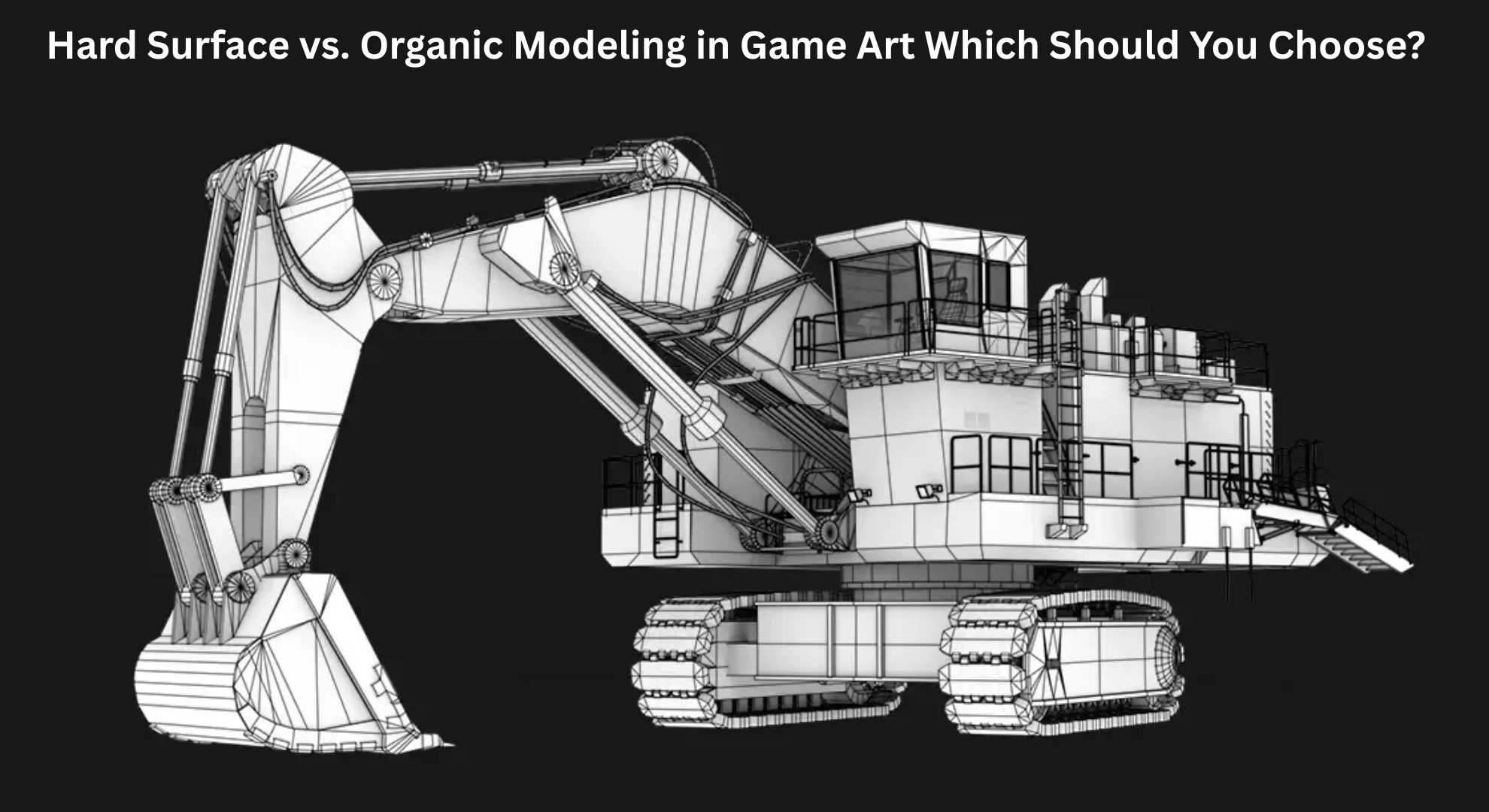Hard Surface vs. Organic Modeling in Game Art Which Should You Choose?

The world of 3D modeling games is vast and continually evolving, offering countless opportunities for artists to create stunning visuals, realistic environments, and immersive characters. While both techniques are essential in building 3D game assets, they differ significantly in their approach, tools, and purpose.In this blog, we’ll break down the differences between hard surface and organic modeling, explore their role in creating 3D game environments.
Understanding the Basics
Before diving into their applications, let’s define both modeling types clearly:
Hard Surface Modeling
3D hard surface modeling are characterized by sharp edges, clean lines, and geometric precision.Examples:
- Spaceships and drones
- Guns and swords
- Car 3D models and vehicles
- Buildings and mechanical props
Organic Modeling
Organic modeling, on the other hand, deals with naturally occurring forms—characters, creatures, trees, animals, and anything with a flowing, curved surface. This technique is best suited for life-like textures and anatomy.Examples:
- Human characters and monsters
- Animals and plants
- Fabric and drapery
Both modeling types serve distinct roles in 3D game assets, but choosing the right one depends heavily on the kind of project you’re working on.
Hard Surface Modeling in Game Art
It provides artists with the tools needed to design precise, functional objects that contribute to world-building in 3D game environments.
Why Choose Hard Surface Modeling?
- Precision & Consistency
If you're working on a futuristic FPS or racing simulator, you'll need to model weapons, buildings, and 3D vehicles with uniform measurements and detailing. 3D hard surface modeling tools like Booleans and beveling make this possible. - Reusable Assets
Many props 3D models—like crates, terminals, doors, and tools—are modular, meaning they can be reused throughout the environment. This adds efficiency to your pipeline. - Game Engine Optimization
Hard surface models typically require fewer polygons compared to organic forms, making them easier to optimize for real-time rendering in engines like Unity or Unreal.
Organic Modeling in Game Art
Why Choose Organic Modeling?
- Expressiveness & Emotion
Characters breathe life into a game. - Natural Flow
Whether it’s flowing hair, draped cloth, or the bark on a tree, organic modeling handles the complexity of curved surfaces much better than its hard-surface counterpart. - High Detail & Realism
With techniques like sculpting and displacement mapping, artists can achieve photo-realistic results that look stunning in 3D modeling games, especially in cutscenes or cinematic sequences.
Industry Examples:
- RPGs often require lush natural landscapes and foliage, crafted using 3D environment modeling techniques grounded in organic modeling.
How Both Fit into 3D Game Asset Creation
The reality is: most games need both. Even in a simple shooter, you’ll require a well-modeled car 3D model or 3D vehicle modeling for the environment, alongside realistic characters and possibly wildlife.
- 3D game assets used in cinematics must be optimized across both styles for performance and realism.
Choosing the Right Path as an Artist
If you're just getting into 3D modeling games, it can be tough to choose which path to focus on. Here’s how to make that decision:
1. Identify Your Interests
Do you love crafting machines and vehicles? Hard surface modeling is for you. Prefer sculpting lifelike creatures or fantasy characters? Go for organic.
2. Look at Job Roles
- Character Artist: Focus on organic modeling with high attention to anatomy.
3. Start with the Fundamentals
No matter the path, learning the basics of topology, UV mapping, and material application is essential. From there, you can branch into software like ZBrush for organic or 3ds Max for hard surface workflows.
Future Trends in 3D Modeling
In addition, real-time rendering and photogrammetry are influencing asset creation, pushing the industry toward more physically accurate models, whether it's a props 3D model or a full character rig.
Conclusion
Choosing between hard surface and organic modeling isn’t a matter of which is better, but rather which suits your artistic goals, the project you're working on, and the types of 3D modeling games you’re passionate about. So, whether you're perfecting a car 3D model for a racing game or sculpting a dragon for a fantasy RPG.
